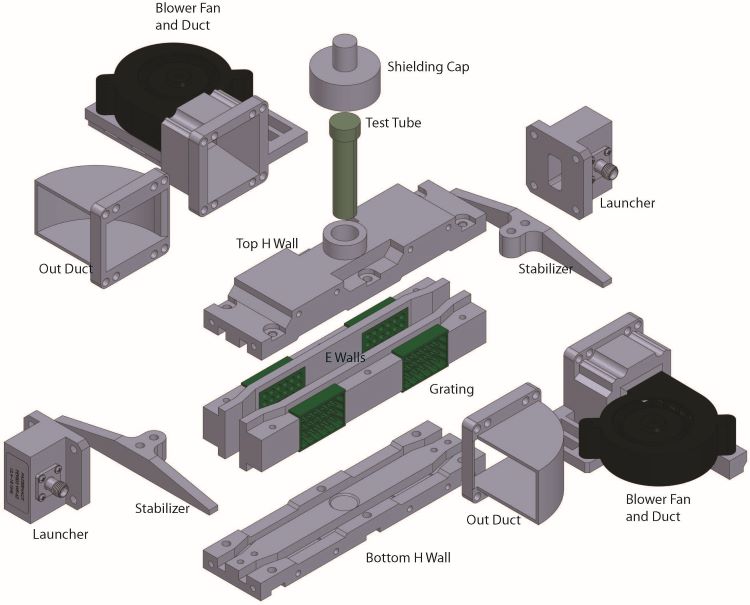Loud singing at just the right frequency can shatter wine glasses – a common trope in Hollywood movies that is based on the physics concept of resonant frequency. A multi-disciplinary research team at Queen’s used the same concept to deactivate coronaviruses, in research funded by the Department of National Defense’s Innovation for Defence Excellence and Security (IDEaS) program and published in the esteemed Nature journal, Scientific Reports. This could lead to novel disinfection technology suitable in situations where other disinfection methods cannot be used.
Led by Dr. Carlos Saavedra, Professor and Head of the Department of Electrical and Computer Engineering at Queen's, the multidisciplinary research team successfully deactivated coronaviruses by subjecting them to low power microwaves at their resonant frequency. This process induced powerful vibrations in the microscopic shells of the viruses, ultimately causing them to rupture. In a carefully designed temperature-controlled study, the researchers determined the resonant frequency band of the human coronavirus 229E and showed that the 99.9% reduction in virus concentration was due to this vibrational effect rather than heat.
Building upon prior research on structure resonant energy transfer for virus deactivation, Saavedra and his team, including PhD student Hayden Banting and Postdoctoral Fellow Ian Goode, designed and 3D-printed air-cooled waveguides to investigate the frequency at which the effect is most pronounced for the human coronavirus 229E. This virus, belonging to the same family as SARS-CoV-2 that caused COVID-19, is safer for experimental purposes but has a very similar structure. The waveguide design allowed precise control over power densities due to well-defined fundamental modes, and the inclusion of air-cooling ensured sample temperatures were kept within a few degrees of ambient temperature.
Collaborators Dr. Che Colpitts, a coronavirus expert from the Department of Biomedical and Molecular Sciences, and her PhD student Carla E. Gallardo Flores prepared samples with precise virus concentrations and analysed them after 45-second exposure per frequency point using 2 Watts of signal power.
The study demonstrated that the newly developed waveguide effectively isolated the physical resonance effect from the heat effect. Comparing 10 different frequency intervals from 0.8 GHz to 40 GHz, an impressive 99.9% reduction in the amount of infectious virus was observed in the interval of 15.0–19.5 GHz at half the treatment time used by other researchers.
“We are seeking to further develop the technology by partnering with end-users from the public and private sector with the goal of deploying a system in an operational environment,” said Dr. Saavedra about this promising new disinfection method.
Reference: https://www.nature.com/articles/s41598-023-36030-6

About IDEaS: Innovation for Defence Excellence and Security (IDEaS) is the Department of National Defence (DND) and the Canadian Armed Forces (CAF)’s access to innovation program. IDEaS transforms defence and security challenges being faced by DND/CAF into innovative solutions to improve Canada’s defence capabilities. Announced in the Fall of 2017 in Strong, Secure, Engaged, Canada’s defence policy, the program has been given $1.6B over 20 years to deliver on its mandate. https://canada.ca/defence-ideas
This article was prepared with assistance from a large language model system, and edited, fact-checked and approved by humans prior to publication.